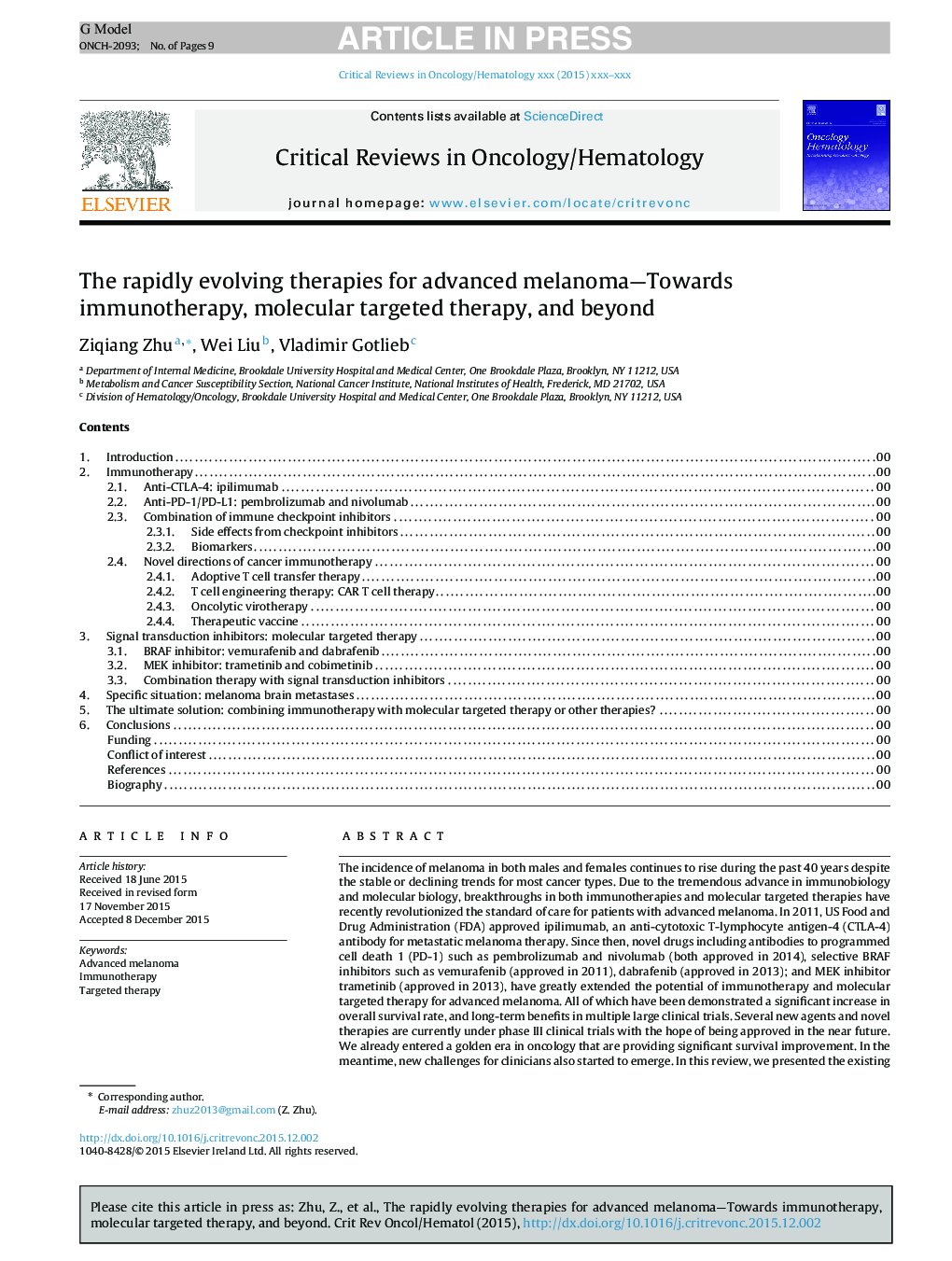| Article ID | Journal | Published Year | Pages | File Type |
|---|---|---|---|---|
| 6113533 | Critical Reviews in Oncology/Hematology | 2016 | 9 Pages |
Abstract
The incidence of melanoma in both males and females continues to rise during the past 40 years despite the stable or declining trends for most cancer types. Due to the tremendous advance in immunobiology and molecular biology, breakthroughs in both immunotherapies and molecular targeted therapies have recently revolutionized the standard of care for patients with advanced melanoma. In 2011, US Food and Drug Administration (FDA) approved ipilimumab, an anti-cytotoxic T-lymphocyte antigen-4 (CTLA-4) antibody for metastatic melanoma therapy. Since then, novel drugs including antibodies to programmed cell death 1 (PD-1) such as pembrolizumab and nivolumab (both approved in 2014), selective BRAF inhibitors such as vemurafenib (approved in 2011), dabrafenib (approved in 2013); and MEK inhibitor trametinib (approved in 2013), have greatly extended the potential of immunotherapy and molecular targeted therapy for advanced melanoma. All of which have been demonstrated a significant increase in overall survival rate, and long-term benefits in multiple large clinical trials. Several new agents and novel therapies are currently under phase III clinical trials with the hope of being approved in the near future. We already entered a golden era in oncology that are providing significant survival improvement. In the meantime, new challenges for clinicians also started to emerge. In this review, we presented the existing evidence for the newest treatments for advanced melanoma, including CTLA-4, PD-1/PD-L1 checkpoint inhibitors and BRAF, MEK inhibitors. We also discussed the strengths, limitations and challenges of using these novel therapies, and potential solutions as well as highlighted the areas requiring further research.
Related Topics
Health Sciences
Medicine and Dentistry
Hematology
Authors
Ziqiang Zhu, Wei Liu, Vladimir Gotlieb,
